The Vegetative Phase Of Cannabis Cultivation
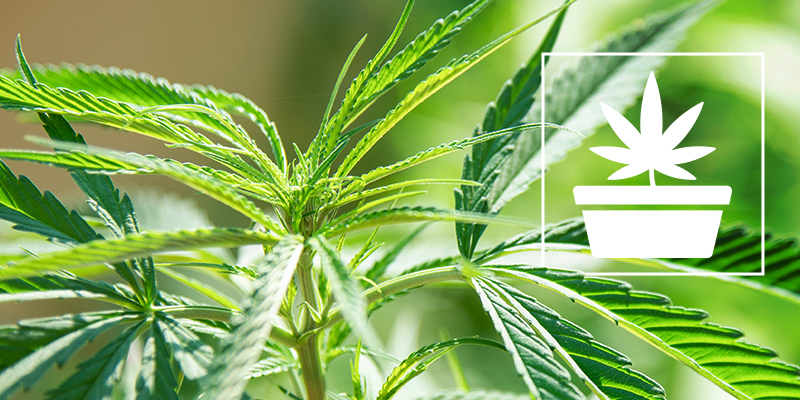
The vegetative stage of a cannabis plant's life cycle is when most of its upward and outward growth occurs, setting the stage for a bountiful harvest. Mastering this phase clears the path for a healthy and abundant flowering period.
The vegetative stage is the period during which the cannabis plant goes from a tiny seedling to a tall and bushy plant (unless it’s trained otherwise). The majority of the vertical and lateral growth happens during these weeks, and it’s crucial for the plant to progress through this stage healthily in order for you to achieve large harvests further down the line. Moreover, plant health problems can be rectified far more easily during this stage than in the flowering stage, so understanding the ins and outs of the veg stage is key.
In this article, we look in depth at this important part of the cannabis plant’s life, and offer guidance to help you optimise the vegetative stage and achieve superior results come harvest time.
What is the vegetative phase?
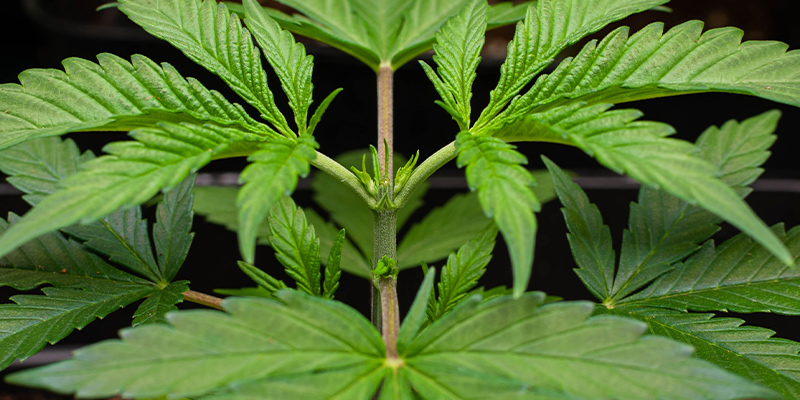
The vegetative phase of a cannabis plant’s life cycle is a dynamic period of growth. During this time, plants focus on building a strong root system, developing lush, green foliage, and growing ample, strong stems. This stage is crucial for accumulating the energy needed for flowering, and it ultimately determines the size and yield of your harvest. During this phase, cannabis plants require specific environmental conditions to thrive and prepare for the transition to flowering.
The duration of the vegetative phase can vary widely, ranging from a few weeks to several months, depending on the grower's preference, strain genetics, and environmental conditions. Indoors, growers have the flexibility to extend the vegetative stage by maintaining a light cycle of 18 hours on and 6 hours off, promoting continued growth, potentially indefinitely. Outdoors, the vegetative phase length is dictated by the natural light cycle, with longer days in the summer months encouraging vegetative growth.
In nature, the vegetative stage occurs between spring and late summer, when the days are longer than the nights—i.e. more than 12 hours of daylight each day. Throughout this part of the year, plants gorge on sunlight, using it to fuel rapid and sometimes quite extreme growth. Some time around late summer/early autumn, when the days shorten and the light spectrum contains more red, photoperiod plants will progress into flowering stage, halting foliage growth and instead producing flowers and pollen sacs, depending on their sex.
Sexing cannabis plants during the vegetative phase
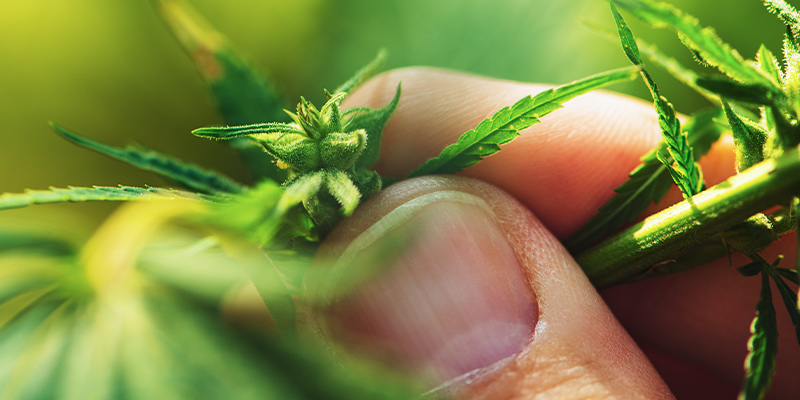
In short, you can't determine the sex of a cannabis plant during the vegetative stage, unless you have access to a high-tech lab that can investigate the genetic makeup of each plant. Assuming this isn’t the case, then you’ll have to wait until the flowering stage begins. You do have time to root out the males before they release any pollen, but you should regularly check your plants once they start flowering and remove males as quickly as possible—assuming you don’t want the females pollinated.
For more detailed guidance, including visual aids, refer to our guide on plant sexing.
Best grow room conditions for the vegetative phase
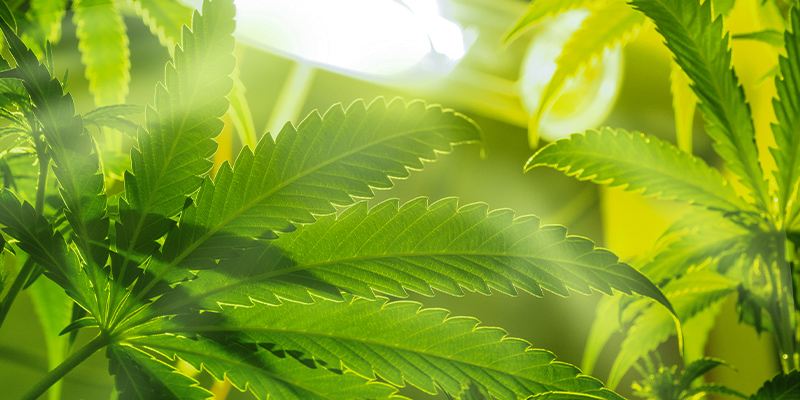
Creating the optimal environment for vegetating cannabis plants will help them to achieve their full potential during this stage, and will ultimately lead to better results later on. During the vegetative phase, several factors contribute to healthy growth:
- Temperature and humidity: Aim for temperatures between 22–28°C during the day and slightly cooler temperatures at night. Humidity levels should be kept between 40–60%, adjusting as necessary to encourage optimal growth and prevent mould or pests.
- Light: Cannabis plants in the vegetative stage require significant light to thrive. The standard cycle is 18 hours of light and 6 hours of darkness, but other ratios exist too. Some who grow autoflowering plants use a 20/4 cycle, or even just leave the lights on all the time. High-quality LED or MH (metal halide) lights are recommended for their full light spectrum and effectiveness, with LEDs in particular becoming more and more popular.
- Air circulation: Good ventilation and air circulation prevent the buildup of heat and humidity, ensuring plants receive fresh CO₂ for photosynthesis. You can also instal a carbon filter in the ventilation system to trap the smell, if you’re concerned about security or would just rather your house didn’t stink of weed.
Vegetative stage: Duration and light cycle
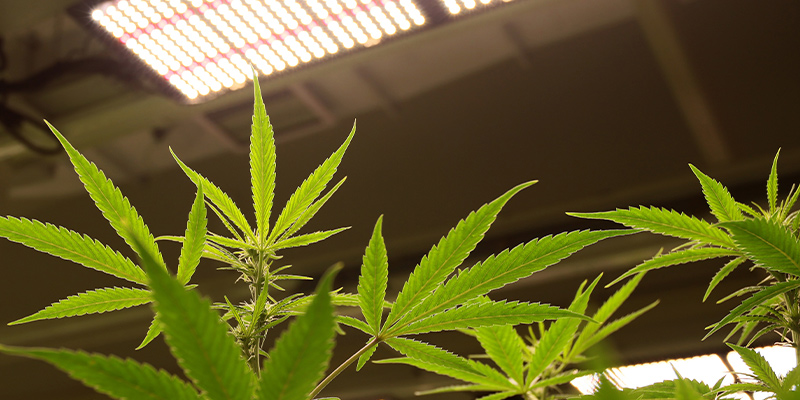
The duration of the vegetative phase is flexible and can be manipulated according to the grower's needs—if you’re growing indoors under lights. Outdoors, your plants bloom at the behest of the sun.
Vegetation indoors
Indoor growers can control the vegetative phase's length by adjusting the light cycle. Keeping plants illuminated for more than 12 hours a day will keep them in the vegetative stage indefinitely. However, you should note that a dark period is important, especially for photoperiod plants. Many of their processes can only be completed during darkness, so you should give them this time.
The vegetative period usually lasts between 2–8 weeks, depending on the desired plant size and grow space limitations. Another consideration is stress, whether from training or accidental damage. If you stress or damage plants, you should give them at least an extra two weeks of vegetative time so that they can heal, as they will not be able to recover properly once they enter the flowering stage.
Vegetation outdoors
Outdoor vegetation is governed by the natural light cycle, with plants typically entering the vegetative phase in spring and early summer, unless you for some reason germinate them later than this (not recommended). In most locations, this phase can extend until late summer, when decreasing daylight hours naturally induce flowering.
There’s not a lot you can do to extend or limit the veg stage outdoors, unless you start carting out black boxes or move your plants inside early to artificially trigger flowering—which is not desirable for most growers.
If you want the most productive plants possible, then the best step you can take is to germinate your seeds as early as possible indoors so that they get the maximum possible number of days under the sun. You don’t want to start too early, as cold spring weather might kill young seedlings, but you should aim to have them outside in April, or by the beginning of May at the very latest. This will give them at least a few months to grow and prepare for flowering.
Vegetation in greenhouses
Growing in a greenhouse can help you optimise vegetative growth while protecting plants from adverse weather conditions. Greenhouses offer a blend of indoor and outdoor cultivation benefits, allowing you to utilise the power of the sun alongside artificial lighting. This way, you can extend the veg phase, if you so desire. Alternatively, you can drag an opaque tarpaulin over the greenhouse to trigger flowering early.
Watering cannabis during the vegetative phase
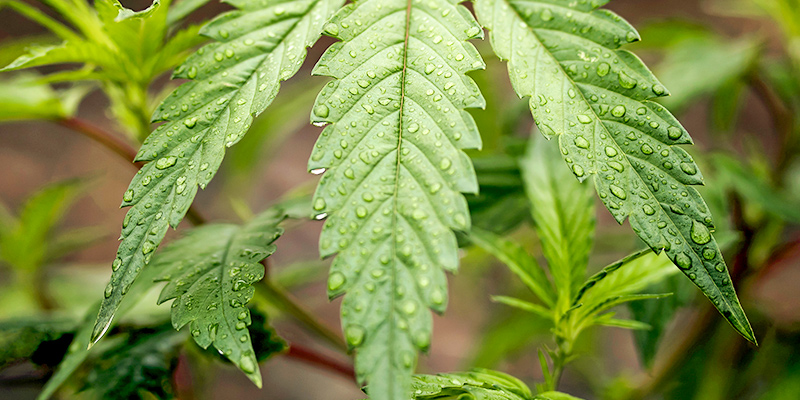
Watering practices during the vegetative phase are crucial for root development and overall plant health, and you should seek to carry out this most basic of tasks with the care and attention you’d pay to something more complex. Watering is easy to get right, and doing so will save you a lot of stress and help your plants significantly.
Overwatering (a more common problem than underwatering) can lead to root rot and nutrient uptake issues, while underwatering can stress plants and stunt growth. Here are a few key considerations:
- Water quality: Use clean, pH-balanced water (pH 6.0–7.0) for optimal nutrient absorption.
- Frequency: Water plants only when the top few centimetres (about a knuckle’s worth) of soil feels dry to the touch. If it’s moist, don’t water—your plants don’t need it.
- Monitoring: Observe your plant’s response to watering schedules and adjust as needed, considering factors like humidity, temperature, and plant size.
- Symptoms of watering issues: The symptoms of overwatering and underwatering may look quite similar, at least during the initial stages. So always err on the side of caution before pouring another litre in. Recovering from underwatering is much, much easier for plants than overwatering, so bear this in mind.
Feeding cannabis during the vegetative phase
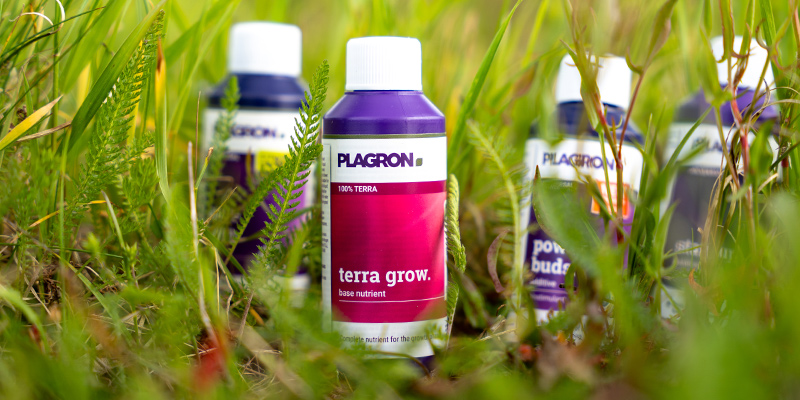
Nutrient requirements are high during the vegetative stage, with an emphasis on nitrogen for foliage growth, along with balanced levels of phosphorus and potassium. During the vegetative stage, the ideal nitrogen, potassium, and phosphorus (NPK) ratio is 3:1:1.
Specific feeds exist for this stage, and you can also make your own—but getting this ratio right will greatly benefit your plant and reduce the chances of running into problems such as overfeeding and nutrient lockout.
As well as using the correct ratio of nutrients, you should also endeavour to give your plants just enough fertiliser, but no more. Just as humans do not become infinitely taller and healthier if they continue eating more and more, neither do cannabis plants. In fact, unlike humans who are healthier if they eat a little too much than too little, plants are better off being slightly underfed. So, make sure that you are not overzealous with your approach to fertilising your plants. You might love them and want the most out of them, but you won’t achieve this with bucketfuls of fertiliser.
Usually, the best results can be obtained by using organic fertilisers, which contain a range of nutrients (from macronutrients through to micronutrients required in trace amounts) and also break down slowly in the soil, meaning that they don’t usually lead to nutrient-related problems.
Training cannabis during the vegetative phase
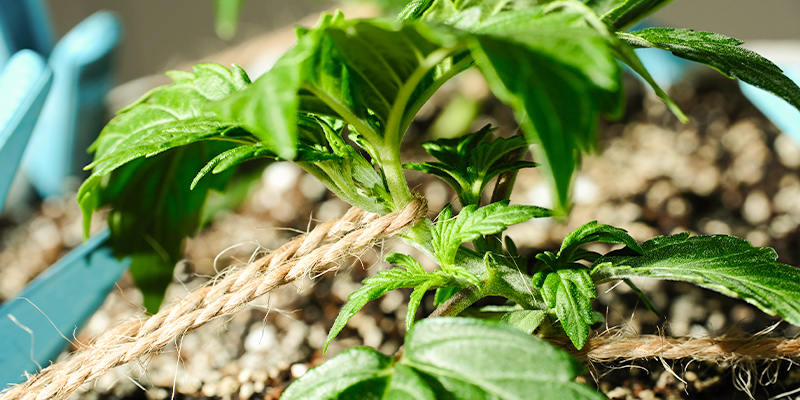
If you want to train your cannabis plants, whether to keep them lower to the ground or to improve yield (or both), then it must be carried out and completed within the vegetative stage. Breaking branches and cutting off colas in the flowering stage will seriously damage your plant and will not improve your yield!
As training is almost always stressful to some degree, you should do it as early as possible so that your plants have adequate time to recover. For instance, if you top a plant and then flip it to flowering 10 days later, you won’t be doing anyone any favours. Likewise, if growing outdoors, train in the spring so that plants can recover throughout the summer.
Common training methods include:
- Sea of green and screen of green (SOG and ScrOG): These methods involve growing many small plants side by side or threading the canopy of plants through a mesh to create a flat and uniform canopy, respectively. Each method increases yield per metre square, not necessarily per plant.
- Low-stress training (LST): This technique involves bending and tying branches to control plant shape and expose lower branches to light. The main stem is secured laterally at the beginning of the vegetative stage, and subsequent growth is encouraged to grow in the same way. This once again creates an even canopy, allowing for equal distribution of light to bud sites. This is suitable for beginner growers and can be used even with autoflowering plants, which generally do not require training as they have a short, predetermined veg stage.
- Topping and fimming: These methods involve cutting off (partially or fully) the plant’s main growing tip so that it grows back with two or more new tips, and can then be repeated. These are considered high-stress training methods, and you must give the plant ample time to recover if you employ them.
Pruning
You should also consider pruning your plant, especially if it has very bushy growth. Prune away lower leaves to improve air circulation and redirect energy towards bud sites. Lower leaves receive very little light anyway once the plant is large, and you will see that they even begin to die off naturally during the flowering stage.
The vegetative stage: Give your plant all it needs to grow
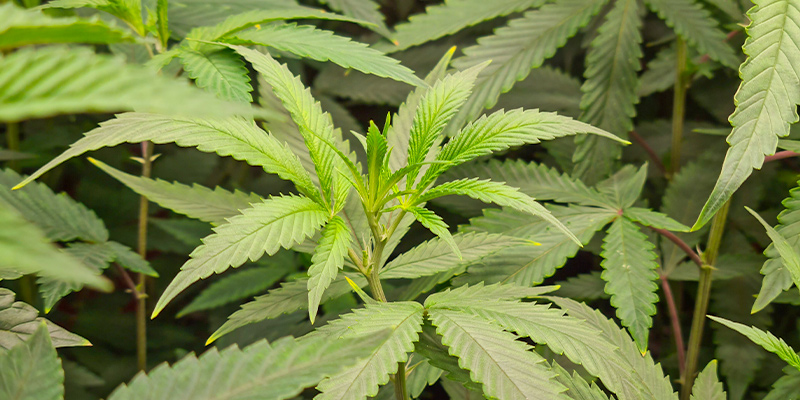
The vegetative stage of a cannabis plant’s life cycle is very exciting, as you watch your plants shoot upwards and outwards, preparing to bear the load of an abundant harvest. During this stage, you can manipulate and train your plants in ways that aren’t safe during the flowering stage, as they have the energy to heal and aren't yet concerned with bud production.
To get the most from your crop, treat your plants as well as possible during this phase, as it lays the foundation for a massive, high-quality harvest!












 United States
United States










